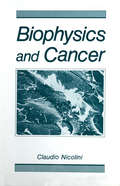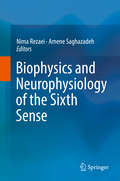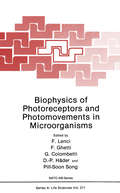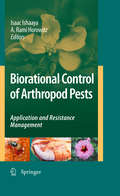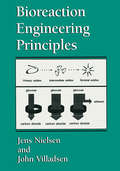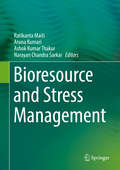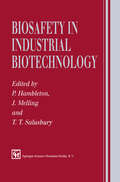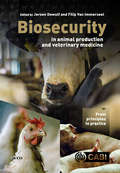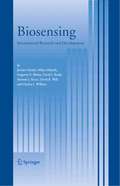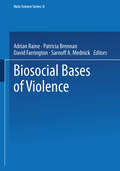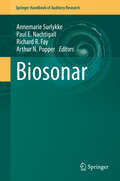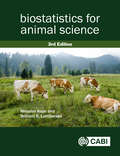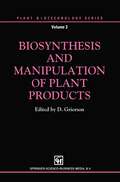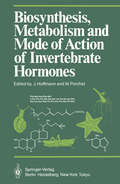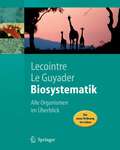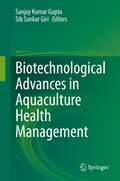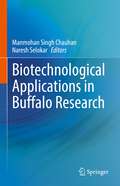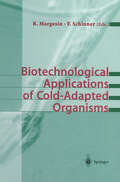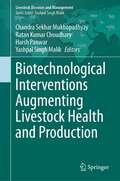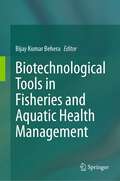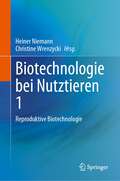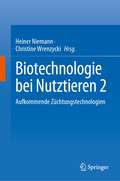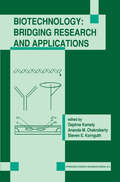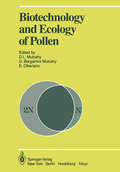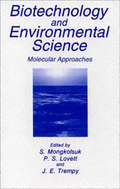- Table View
- List View
Biophysics and Cancer
by Claudio NicoliniSince the early times of the Greek philosophers Leucippus and Democritus, and later of the Roman philosopher Lucretius, a simple, fundamental idea emerged that brought the life sciences into the realm of the physical sciences. Atoms, after various interactions, were assumed to acquire stable configurations that corresponded either to the living or to the inanimate world. This simple and unitary theory, which has evolved in successive steps to our present time, remarkably maintained its validity despite several centuries of alternative vicissitudes, and is the foundation of modern biophysics. Some of the recent developments of this ancient idea are the discovery of the direct relationship between spatial structures and chemical activity of such molecules as methane and benzene, and the later discovery of the three-dimensional structure of double-helical DNA, and of its relationship with biological activity. The relationship between the structure of various macromolecules and the function of living cells was one of the most striking advancements of modern science, obtained by the cooperation of physicists, chemists, mathematicians, engineers, biologists, and physicians. This crossing of the life and physical sciences has given rise to new and exciting frontiers, and to a new synthesis where there is a frequent interconnection of expertise, and where there is an exchange of roles among traditionally separated soft and hard sciences. Even if knowledge is still transmitted to new generations within univer sities as separate disciplines, new knowledge is acquired today in the laboratory by truly interdisciplinary teams.
Biophysics and Neurophysiology of the Sixth Sense
by Nima Rezaei Amene SaghazadehMultiple senses, like multiple intelligences, are a key to brain variability and therefore human evolution. Besides the traditional five senses (vision, olfaction, gustation, audition, and somatosensory), humans can also perceive the body’s own position (the sense of proprioception) and movement (the vestibular sense). Interoception is the feeling one has about the internal physiological conditions of the entire body. Additionally there is a sense of intuition, also known as the sixth sense. Despite their best efforts, researchers are still unable to concur in specifying the nature of the sixth sense; some consider the sense of proprioception as the sixth sense, whereas others prefer to consider that as a part of interoception. This book will provide a scientific system for the human sixth sense using relevant biophysical and neurophysiological evidence. The power of “sixth sense” seems to be underestimated, due to difficulties in defining the concept clearly. According to socioeconomics and neural physics, the sixth sense is that which permits humans to create perception or to enhance the quality of their perception of events. Roughly speaking, the sixth sense engages a metacognitive process through which prior knowledge and the information received from other sensory modalities are synergized. It is not restricted to specific arrow of time and type of mind or to the observer’s body, but it considers all arrows of time (past, present, future), types of mind (conscious and unconscious), and physical bodies (self and other). However it is expected that the observer has specific biases towards what happens now or would happen in the future and its relation to himself. Particularly, humans appeal to the sixth sense on the road to achieving success in social competitions and to reduce uncertainty in complex decision making processes. In addition to evidence linking genetic components to the sixth sense submodalities, there have been developed strategies for increasing the quality of perceptions provided by the sixth sense. Meditation, through which individuals try to be detached from the world, increases gamma-band activity and that increased gamma-band activity is found following top-down processing. Therefore it can be inferred that the detachment from the environment may enhance synchronization of the wave functions in favor of strengthening the sixth sense. It can serve as the mechanism of enhancement of the sixth sense in those whose sensory systems are intact, it can also serve as the mechanism of compensation in those who have sensory deficiencies. In the latter case, it in fact encourages creativity in the use of relatively strong senses. This justifies Beethoven's deafness and his great musical creativity or Bramblitt's blindness and his enormous capability to paint and many other similar examples.In summary, the present book is divided into five parts. Part 1 (chapters 1-6) provides information about the system of proprioception and its neurophysiology and biophysics. Part 2 (chapters 7-10) examines the system of interoception. The information provided in these two parts would enable us to move towards the next three parts of the story, aimed at developing a scientific system of the sixth sense. The first chapter of part 3 begins with concepts and uses them to arrive at reasonable conclusion that there must be a sense that requires multistep information processing and that is separate from the sense of proprioception and the sense of interoception. Such sense is commonly known as the sixth sense. However it should be re-numbered because the sense of proprioception is already known as the sixth sense. The second chapter of this part is to draw neurocircuitry that innervates the sixth sense in the mind of a man, while the third chapter would address the questions whether the sixth sense system requires an optimal competence or consciousness of mind to function properly and if so which is the optimal state: conscious or unconscious and competence or incompetence. In the fourth chapter of this part, we will focus on t
Biophysics of Photoreceptors and Photomovements in Microorganisms (Nato Science Series A: #211)
by F. Lenci Francesco Ghetti Giuliano Colombetti D. P. Häder Pill-Soon SongThis volume contains the lectures given at the NATO Advanced Study Institute on "Biophysics of Photoreceptors and Photomovements in Microorganisms" held in Tir renia (Pisa), Italy, in September 1990. The Institute was sponsored and mainly funded by the Scientific Affairs Division of NATO; the Physical Science Committee and the Institute of Biophysics of National Research Council of Italy also supported the School and substantially contributed to its success. It is our pleasant duty to thank these institu tions. Scientists from very different backgrounds contributed to the understanding of this fast developing field of research, which has seen considerable progress during the last years. The areas of expertise ranged from behavioral sciences, supported by sophi sticated techniques such as image analysis or laser light scattering, to spectroscopy, ap plied, in different time domains, to the study of the primary photoreactions, to electro physiology, biochemistry or molecular biology, with the aim of analyzing the various steps of the transduction chains and how they control the motor apparatus of the cells. The organisms studied covered a wide range, from bacteria to algae, fungi and other eukaryotes. Thus, the ASI represented a successful opportunity for carrying on and imple menting an interdisciplinary approach to the study of the biophysical basis of photore ception and photosensory transduction in aneural organisms, with special attention to the basic phenomena and the underlying molecular events. We hope that this book has caught the spirit in which the ASI was conceived.
Biorational Control of Arthropod Pests: Application and Resistance Management
by Isaac Ishaaya A. Rami HorowitzFor nearly 50 years, pest control was mostly based on broad-spectrum conv- tional insecticides such as organochlorines, organophosphates, carbamates and pyrethroids. However, the severe adverse effects of pesticides on the environment, problems of resistance reaching crisis proportions and public protests led to stricter regulations and legislation aimed at reducing their use. Ways to reduce the use of synthetic pesticides in plant protection and to use more alternative and novel me- ods for pest control or biorational control are the challenges of pest control for the twenty-first century. The term biorational (biological + rational) pesticides can be defined as the use of specific and selective chemicals, often with a unique modes of action, that are compatible with natural enemies and the environment, with minimal effect on n- target organisms. Biorational control is based on a diversity of chemical, biological and physical approaches for controlling insect pests which results in minimum risk to man and the environment.
Bioreaction Engineering Principles
by Jens Nielsen John VilladsenIntegrating recent research on the physiology and modelling of bioreactions and bioreactors, the authors present a comprehensive, unified introduction to the principles and practices of the field. The work features nearly 100 detailed design examples and problems, many of which are suitable for hands-on demonstrations on a personal computer or for expanded research. The text will serve as a highly instructive guide for students in bioengineering and biotechnology, as well as biochemical, chemical, and environmental engineering.
Bioresource and Stress Management
by Ratikanta Maiti Aruna Kumari Ashok Kumar Thakur Narayan Chandra SarkarThis book is a compilation of recent global measures to conserve bio-resources and manage biotic and abiotic stresses. It highlights emerging issues related to agriculture, abiotic and biotic stress factors, ethnic knowledge, climate change and global warming, as well as natural resources and their sustainable management. It also focuses on the consolidated efforts of scientists and academics engaged in addressing a number of issues related to resource management and combating stresses in order to protect the Earth. Crop production and productivity have been significantly improved, however, there have been no corresponding practical advances in sustainable agriculture.This book offers a wide range of affordable approaches to managing bio-resources with a focus on sustainability. Lastly, it describes research highlights and future areas of research.
Biosafety in Industrial Biotechnology
by P. Hambleton J. Melling T. T. SalusburyAs an industry, biotechnology may be likened to the Hymn Book, being both ancient and modern. Whereas activities such as baking, brewing, the fermenting of foods date from our earliest attempts to control and utilise the environment, the application of recombinant DNA technology is recognised as being at the forefront of novel industrial development. Perhaps because of its association with processing foodstuffs together with the benefits derived from applications in the early organic chemistry and pharmaceutical industries, biotechnology has been regarded as being inherently safe. Yet unlike other modern industries, such as chemical and nuclear, where regulation has followed from incidents or accidents, modern biotechnology has been subject to close scrutiny and regulation almost from its inception. The process of regulation itself is somewhat unusual in that it was initially self-imposed by the very scientists who developed the fundamental techniques of recombinant DNA technology. They recognised the signific ance of their development but were concerned of the effects on humans and the environment of uncontrolled application of the new, powerful technology. Concern about the possible consequences of genetic manipula tion has undoubtedly been the driving force behind the regulations that are now in place in many parts of the world and which are the subject of this book. Safety issues in the biotechnology industry can be categorised under three headings: worker, environmental and consumer (product) safety.
Biosecurity in Animal Production and Veterinary Medicine: From principles to practice
by Jeroen Dewulf and Filip Van ImmerseelGlobally, the way the animal production industry copes with infectious diseases is changing. The (excessive) use of antimicrobials is under debate and it is becoming standard practice to implement thorough biosecurity plans on farms to prevent the entry and spread of pathogenic micro-organisms. Not only in farm animal production, but also in facilities where companion animals are kept, including in veterinary practices and clinics, awareness of the beneficial implications of a good biosecurity plan has raised. The book Biosecurity in Animal Production and Veterinary Medicine is the first compilation of both fundamental aspects of biosecurity practices, and specific and practical information on the application of the biosecurity measures in different animal production and animal housing settings. The book starts with a general introductory chapter on the epidemiology of infectious diseases, followed by a chapter explaining the general principles of biosecurity. Specific topics of biosecurity, including rodent and insect control, cleaning and disinfection, hygiene and decontamination of feed, drinking water and air, and measuring the biosecurity status of farms, are detailed in dedicated chapters. Explanations on the relevance of the implementation of biosecurity plans in order to improve animal health and performance and reduce antimicrobial usage are described, and a chapter on ways to motivate farmers to implement a biosecurity plan has been included. Practical chapters deal with biosecurity in the poultry, pig and cattle industry, horse facilities, dog kennels, veterinary practices and clinics and laboratory animal facilities. The book is a practical guide that can be used by farm and animal facility managers, consultants, veterinarians, animal caretakers, and people with an interest in prevention of diseases in animals. Academics and students will benefit from the book because it contains all relevant information on animal biosecurity.
Biosensing: International Research and Development
by Jerome Schultz Milan Mrksich Sangeeta N. Bhatia David J. Brady Antionio J. Ricco David R. Walt Charles L. WilkinsWe have come to know that our ability to survive and grow as a nation to a very large degree depends upon our scientific progress. Moreover, it is not enough simply to keep abreast of the rest of the world in scientific matters. 1 We must maintain our leadership. President Harry Truman spoke those words in 1950, in the aftermath of World War II and in the midst of the Cold War. Indeed, the scientific and engineering leadership of the United States and its allies in the twentieth century played key roles in the successful outcomes of both World War II and the Cold War, sparing the world the twin horrors of fascism and totalitarian communism, and fueling the economic prosperity that followed. Today, as the United States and its allies once again find themselves at war, President Truman’s words ring as true as they did a half-century ago. The goal set out in the Truman Administration of maintaining leadership in science has remained the policy of the U.S. Government to this day: Dr. John Marburger, the Director of the Office of Science and Technology (OSTP) in the Executive Office of the President made remarks to that effect during his confirmation hearings in October 2 2001.
Biosocial Bases of Violence (Nato Science Series A: #292)
by Adrian Raine Patricia Brennan David P. Farrington Sarnoff A. MednickProceedings of a NATO ASI held in Rhodes, Greece, May 12-21, 1996
Biosonar (Springer Handbook of Auditory Research #51)
by Annemarie Surlykke Paul E. Nachtigall Richard R. Fay Arthur N. PopperTwo groups of animals, bats and odontocetes (toothed whales), have independently developed the ability to orient and detect prey by biosonar (echolocation). This active mechanism of orientation allows these animals to operate under low light conditions. Biosonar is a conceptual overview of what is known about biosonar in bats and odontocetes. Chapters are written by bat and odontocetes experts, resulting in collaborations that not only examine data on both animals, but also compare and contrast mechanisms. This book provides a unique insight that will help improve our understanding of biosonar in both animal groups.
Biostatistics for Animal Science
by Miroslav Kaps William LambersonDesigned to cover techniques for analysis of data in the animal sciences, this popular textbook provides an overview of the basic principles of statistics enabling the subsequent applications to be carried out with familiarity and understanding. Each chapter begins by introducing a problem with practical questions, followed by a brief theoretical background. Most topics are followed up with numerical examples to illustrate the methods described using data-sets from animal sciences and related fields. The same examples are then solved using the SAS software package. Key features of this third edition: - Updated throughout, and covers a wealth of new distributions and new material on non-normal dependent variables - Improved clarity of text and examples - Includes both basic techniques and more complex procedures to provide an essential resource whatever your level - Contains exercises and many worked examples in SAS. Written primarily for students and researchers in animal sciences, the text is also useful for those studying agricultural, biological, and veterinary sciences.
Biosynthesis and Manipulation of Plant Products (Plant Biotechnology Series)
by Donald GriersonVolumes I and 2 of this Plant Biotechnology series reviewed fundamental aspects of plant molecular biology and discussed production and analysis of the first generation of transgenic plants of potential use in agriculture and horticulture. These included plants resistant to insects, viruses and herbicides, which were produced by adding genes from other organisms. Realisation of the potential of plant breeding has led to a resurgence of interest in methods of altering the structure, composition and function of plant constituents, which represents an even greater challenge and offers scope for improving the quality of a wide range of agricultural products. This, in tum, has resulted in a re-evaluation of priorities and targets by industry. Volume 3 of this series considers the biochemical and gentic basis of the biosynthesis of plant products such as starch, lipids, carotenoids and cell walls, and evaluates the ways in which biosynthesis of these products can be modified for use in the food industries. Authors also cover the biosynthesis of rare secondary products and the function and application of proteins for plant protection and therapeutic use. The emphasis throughout is on the relationship between fundamen tal aspects of biosynthesis and structure-function relationships, and application of this knowledge to the redesigning and altering of plant products by molecular genetics.
Biosynthesis, Metabolism and Mode of Action of Invertebrate Hormones (Proceedings in Life Sciences)
by J. Hoffmann M. PorchetBiosystematik: Alle Organismen Im Überblick (Springer-Lehrbuch)
by Guillaume Lecointre Hervé Le GuyaderWussten Sie, dass Sie mit einem Röhrling näher verwandt sind als mit einem Gänseblümchen oder Vögel den Krokodilen näher sind als Eidechsen? In den letzten 30 Jahren sind die Methoden der Klassifikation des Lebens völlig neu überdacht worden. Das Resultat stellt die bisherige Einteilung der mehr als 2 Millionen bekannten Arten auf den Kopf. Das Buch hilft, die organismische Vielfalt zu bewältigen, indem wesentliche Einteilungs- und Ordnungskriterien vorgestellt und bedeutende stammesgeschichtliche Entwicklungslinien diskutiert werden.
Biotechnological Advances in Aquaculture Health Management
by Sanjay Kumar Gupta Sib Sankar GiriThis book is an inclusive coverage of advances in aquaculture health management. It offers latest updates as well as explains the novel concepts and issues related to aquatic animal health management. To support the understanding of the concepts, there is extensive use of illustrations. Chapters emphasize on the state of art techniques and hold great promise for the sustainable development of aquaculture. This book is of interest to teachers, researchers, aquatic biologists, capacity builders and policymakers. Also the book serves as additional reading material for undergraduate and graduate students of aquatic sciences, marine sciences, biotechnology, ecology, and environmental sciences. National and international aquatic scientists, policy makers will also find this to be a useful read.
Biotechnological Applications in Buffalo Research
by Manmohan Singh Chauhan Naresh SelokarThis book comprehensively reviews the advancements in biotechnological applications for the enhanced production and conservations of buffalo (Bubalus bubalis). The book discusses developments in assisted reproduction to improve productivity and the produce novel products for applications to human health and nutrition. The initial chapters of the book discuss the global distribution and domestications of buffalo, and nutritive values of buffalo milk, while the subsequent sections examine the applications of the genome-wide association traits to identify potential genetic variants affecting important economic traits. It identifies predictive biomarkers for postpartum or peripartum diseased-state and presents potential protein biomarkers for the diagnosis of early pregnancy in buffalo. Lastly, it discusses recent scientific developments such as induced pluripotent stem cells, spermatogonial stem cells, somatic cell nuclear transfer, and buffalo as a model for human biomedical research. This book is a useful source to students, academicians, researchers, and policymakers who are involved in buffalo science and industry.
Biotechnological Applications of Cold-Adapted Organisms
by Rosa Margesin Franz SchinnerHow can industry profit from the biochemical tricks of cold-adapted organisms? This book covers a range of aspects in this fascinating field, from genetic tools to environmental biotechnology.
Biotechnological Interventions Augmenting Livestock Health and Production (Livestock Diseases and Management)
by Chandra Sekhar Mukhopadhyay Ratan Kumar Choudhary Harsh Panwar Yashpal Singh MalikThis book comprehensively discusses the applications of molecular genetics, functional and structural genomics, and proteomics vis-a-vis bioinformatics, artificial intelligence, and robotics in livestock healthfulness and productivity. It reviews the biotechnological approaches in veterinary sciences for increasing productivity and resistance to disease. The book emphasizes the approaches based on artificial intelligence to analyze the data collected on animals, pathogens, and their environment. It underscores artificial intelligence applications in disease diagnosis, epidemiological studies, and detecting biological phenomena, including heat-detection, pregnancy, docility, and infections. Further, the book examines the genomics and proteomics approaches for understanding the gut microbiota and the role of pathogen-host interactions in animal health and disease. Lastly, it explores both pathogenic and non-pathogenic microbial transfer between humans, animals, and the environment across one health spectrum.
Biotechnological Tools in Fisheries and Aquatic Health Management
by Bijay Kumar BeheraThis edited book is focused on SDG 14: life below water. This book covers all aspects of fish biotechnology and health management. A detailed description is provided of CRISPR Cas9 technology application in the development of superior variety of fish with better growth, disease resistance, etc., accompanied by numerous helpful photographs and schematic diagrams. In addition, recent developments in nanotechnology and its application in fisheries production enhancement have been discussed. Further, topics includes, probiotics, immunostimulants, fish genetic markers, bioremediation, metagenomics, transgenerational immune priming, application of cell culture in fisheries and nano-biosensor application on fish disease diagnosis, pollution monitoring, etc. are provided in details. . The book is helpful for researchers, teachers, students, farmers, and entrepreneurs in utilizing the knowledge on recent advancements in different aspects of fish genetics and biotechnology for future research and aquaculture production enhancement.
Biotechnologie bei Nutztieren 1: Reproduktive Biotechnologie
by Heiner Niemann Christine WrenzyckiDieses zweibändige Lehrbuch bietet einen umfassenden Überblick über das weite Feld der Tierbiotechnologie mit besonderem Schwerpunkt auf der Reproduktion und Zucht von Nutztieren. Der Leser wird mit einer Vielzahl modernster Technologien und neuer genetischer Instrumente und deren Anwendungen in der Tierproduktion vertraut gemacht. Außerdem werden ethische und rechtliche Aspekte der Tierbiotechnologie erörtert und neue Trends und Entwicklungen auf diesem Gebiet kritisch bewertet. Das zweibändige Werk ist ein Muss für Doktoranden, fortgeschrittene Studenten und Forscher auf dem Gebiet der Veterinärmedizin, Genetik und Tierbiotechnologie.Dieser erste Band befasst sich hauptsächlich mit künstlicher Befruchtung, Embryotransfertechnologien bei verschiedenen Tierarten und der Kryokonservierung von Eizellen und Embryonen.
Biotechnologie bei Nutztieren 2: Aufkommende Züchtungstechnologien
by Heiner Niemann Christine WrenzyckiDieses zweibändige Lehrbuch bietet einen umfassenden Überblick über das weite Feld der Tierbiotechnologie mit besonderem Schwerpunkt auf der Reproduktion und Zucht von Nutztieren. Der Leser wird mit einer Vielzahl modernster Technologien und neuer genetischer Instrumente und deren Anwendungen in der Tierproduktion vertraut gemacht. Außerdem werden ethische und rechtliche Aspekte der Tierbiotechnologie erörtert und neue Trends und Entwicklungen auf diesem Gebiet kritisch bewertet. Das zweibändige Werk ist ein Muss für Doktoranden, fortgeschrittene Studenten und Forscher auf dem Gebiet der Veterinärmedizin, Genetik und Tierbiotechnologie.Dieser zweite Band ist den genetischen Werkzeugen der Tierbiotechnologie gewidmet, wie dem somatischen Klonen, transgenen Technologien und der Anwendung von Stammzellen in der Tierzucht. Auch ethische und rechtliche Aspekte werden erörtert.
Biotechnology: Proceedings of the U.S.-Israel Research Conference on Advances in Applied Biotechnology Biotechnology June 24–30, 1990; Haifa, Israel
by Daphne Kamely A. M. Chakrabarty Steven E. KornguthBiotechnology is advancing at a rapid pace with numerous applications in medicine, industry, agriculture and environmental remediation. Recognizing this, government, industrial and academic research and development invest ment in biotechnology has expanded rapidly. The past decade has seen the emergence of applications of this technology with a dual-use potential. Mili tary applications focus on four major areas: biomedical technology, such as vaccine development and medical diagnostics; detection of toxins, chemicals and pathogens; material biotechnology; and biological decontamination, in cluding biodegradation and bioremediation. This conference emphasizes the non-medical applications of biotechnol ogy. The first two sessions focus on the synthesis and properties of molecules that may be used in detectors. The traditional approach to detection of chemical and biological agents relied on the development of specific assays or analyses for known agents. Advances in molecular biology have made possible the production of large quantities of toxins which were previously available in minute quantities, and the molecular engineering of toxins and pathogens with specific pharmacologic and physical-chemical properties. In addition to the traditional approaches to detection of specific known compounds, biotechnology now offers generic approaches to detection. Physiological targets, known as receptors, are primary targets for many drugs and toxins. Similarly, pathogens rely on receptors to gain access to cells. These receptors function as sensitive detectors, generating signals which are transduced and amplified.
Biotechnology and Ecology of Pollen: Proceedings of the International Conference on the Biotechnology and Ecology of Pollen, 9–11 July, 1985, University of Massachusetts, Amherst, MA, USA
by David L. Mulcahy Gabriella Bergamini Mulcahy Ercole OttavianoIn Recognition of the Forgotten Generation D. L. MULCAHyl Pollen was long believed to serve primarily a single function, that of delivering male gametes to the egge A secondary and generally overlooked value of pollen is that it serves to block the transmission of many defective alleles and gene combinations into the next generation. This latter function comes about simply because pollen tubes carrying defective haploid genotypes frequently fail to complete growth through the entire length of the style. However, the beneficial consequences of this pollen selection are diluted by the fact that the same deleterious genotypes are often transmitted through the egg at strictly mendelian frequencies (Khush, 1973). Gene expression in the pollen might thus at least appear to be a phenomenon of trivial consequence. Indeed, Heslop-Harrison (1979) rightly termed the gametophytic portion of the angiosperm life cycle, the "forgotten generation." This neglect, however, came about despite subtle but constant indications that pollen is the site of intense gene activity and selection. For example, Mok and Peloquin (1975) demonstrated that relatively heterozygous diploid pollen shows heterotic characteristics whereas relatively homozygous diploid pOllen does not. This was proof positive that genes are expressed (that is, transcribed and translated) in the pollen. 1 Department of Botany, University of Massachusetts Amherst, MA 01003, USA viii However, the implications for pollen biology of even this recent and well known study were not widely recognized.
